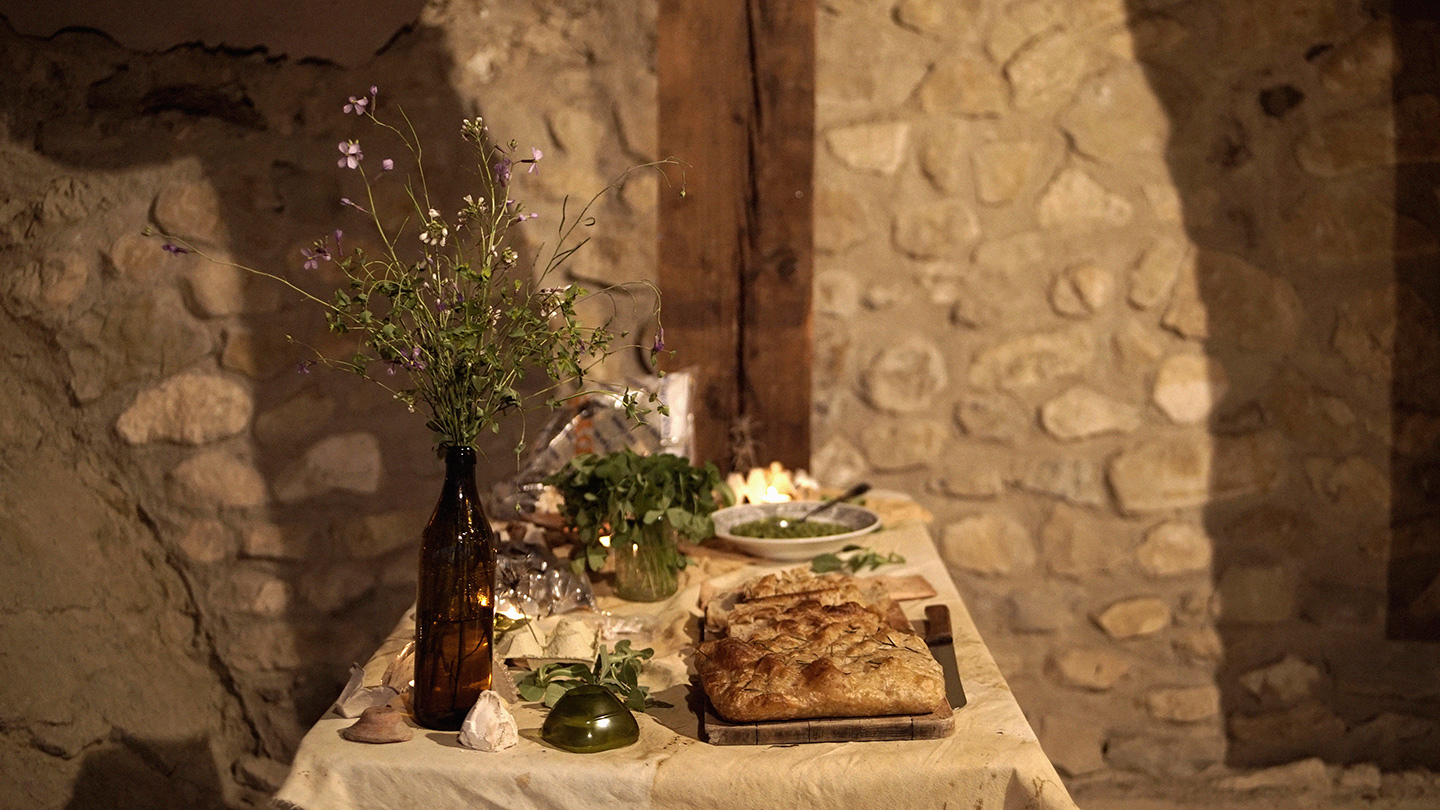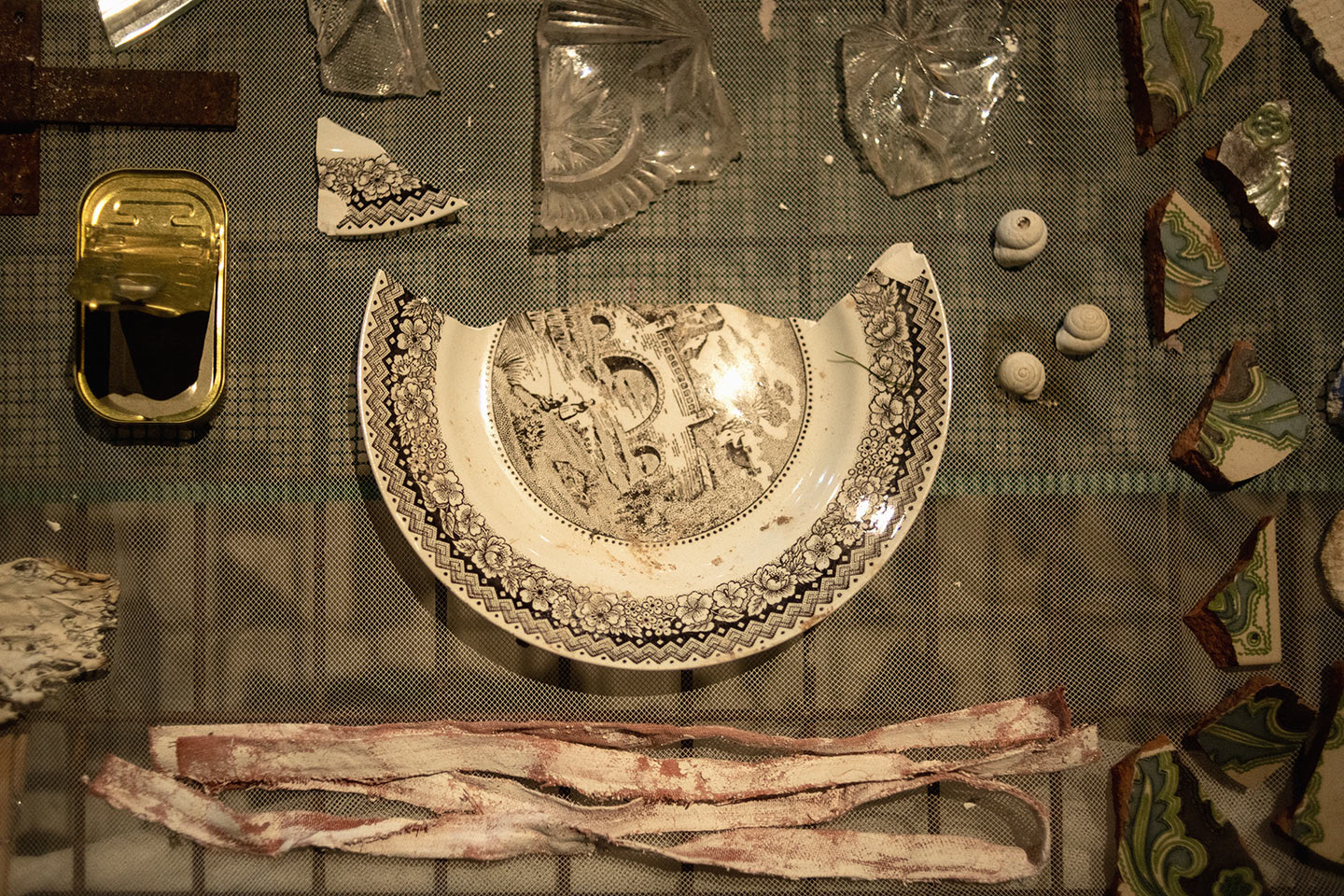
01 Mar Phoebe van Essche
Residency programme: March 2022 – May 2022
collaborator: Lydia Thompson
March 2022
Phoebe and Lydia are presenting their first month of research, in which they have explored Blanca while collecting materials they find aesthetically remarkable. Lydia and Phoebe decontextualize, study, and curate these artefacts to create a dialogue between themselves, the objects, and the place.
Most of the findings are displayed by category and without manipulation, inviting you to imagine their pasts and futures. Warped surfaces hang in the centre of the space, made from recycled paper in a labour-intensive process of deconstruction and production. An altarpiece displaying a composition of natural and manufactured materials takes us to universes of formal relationships, evoking real and imagined ecosystems.
April 2022
Phoebe and Lydia are presenting the results of their second month of research in Blanca.
This month, they have focused on the domestic kitchen as a bio-geo-chemical assemblage, and as a site of labour and gendered performance. They have also worked with natural textile dyes, food and fabric where our bodies touch local and distant landscapes everyday.
Phoebe and Lydia have spent the month foraging for food and natural dyes around Blanca, taking advantage of the abundant rain, which has resulted in an abundance of “spontaneous plants” (commonly known as “weeds”).
Within the installation, they explore the life cycles of materials, the concept of “waste”, and radical abundance.
They invite you to please enjoy the food available; each element represents ingredients from the landscape which can sustain us.
May 2022
The connection between a house and its inhabitants is a cyclical relationship of love and labour; the house fulfils a basic human need by providing shelter, which is maintained by the resident. Caring for the house involves both domestic and manual labour, in which the resident begins to truly inhabit the house. To love the house is to have a home that is loving, bringing life to both.
The work of Phoebe and Lidia this month consisted in a dialogue with the traditional house of La Peña Negra “Casa Jazmin”.
An endless task of sweeping the floor when the walls are crumbling, and the wind constantly blows around dust and jasmine flowers, talks about the unavoidable entropy.
While cleaning, fixing cracks, pruning and planting, Lidia and Phoebe had the chance to observe how the house was put together, altered, and repaired over the years. Like a bird’s nest, these houses were made by collecting pine from the forest, reeds from the river, and esparto in the hills, with their subsequent actions embedded in the ceilings.
A Vernacular Architecture, built by the people who live in them, using local materials and inheriting /creating knowledge in their making. It is an extremely sustainable and site-specific architecture, built to last on a moving mountain and be comfortable in the heat. This knowledge should be preserved because it not only teaches us how to be self-sufficient but also how to live simply.
In our era of decreasing resources and mass population, where the idea of good living has been based on consumption, inhabiting casa Jazmin is a precious lesson of how little we need and how unrelated consumption can be with our fulfilment.
















